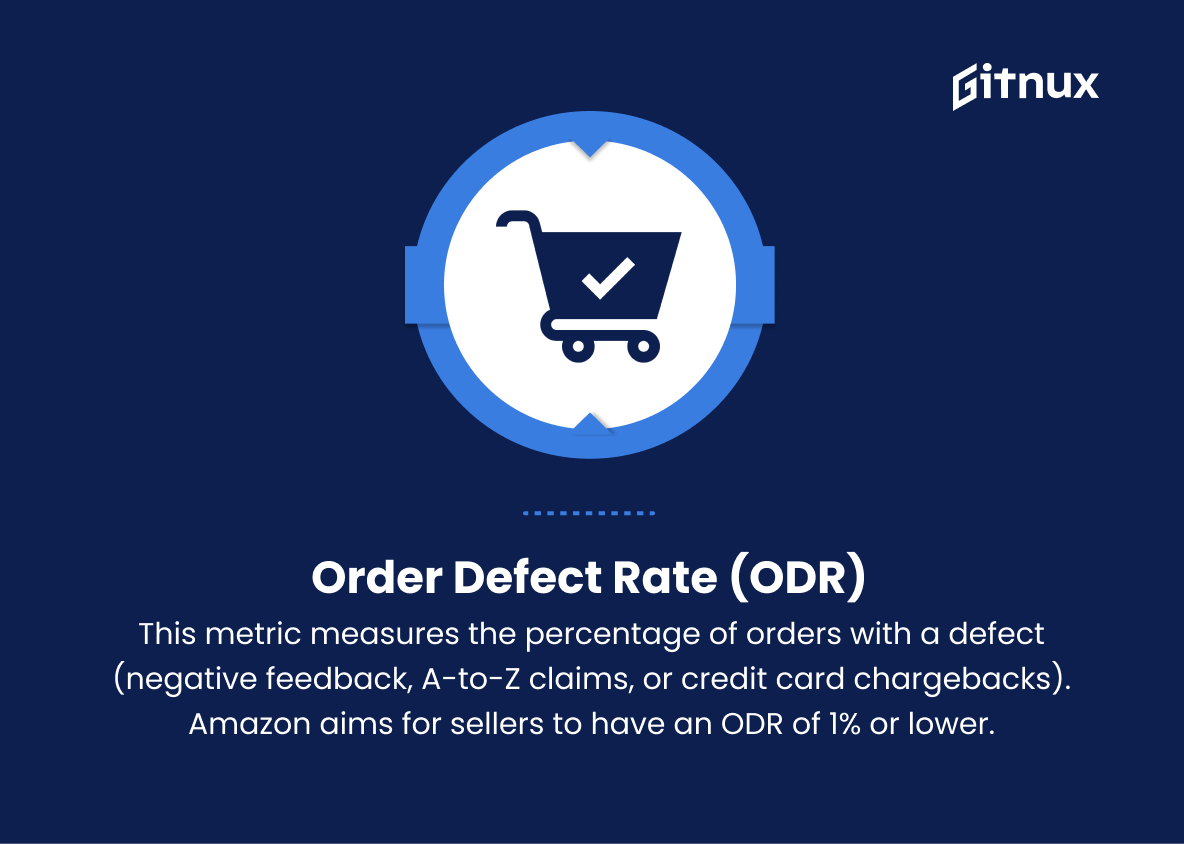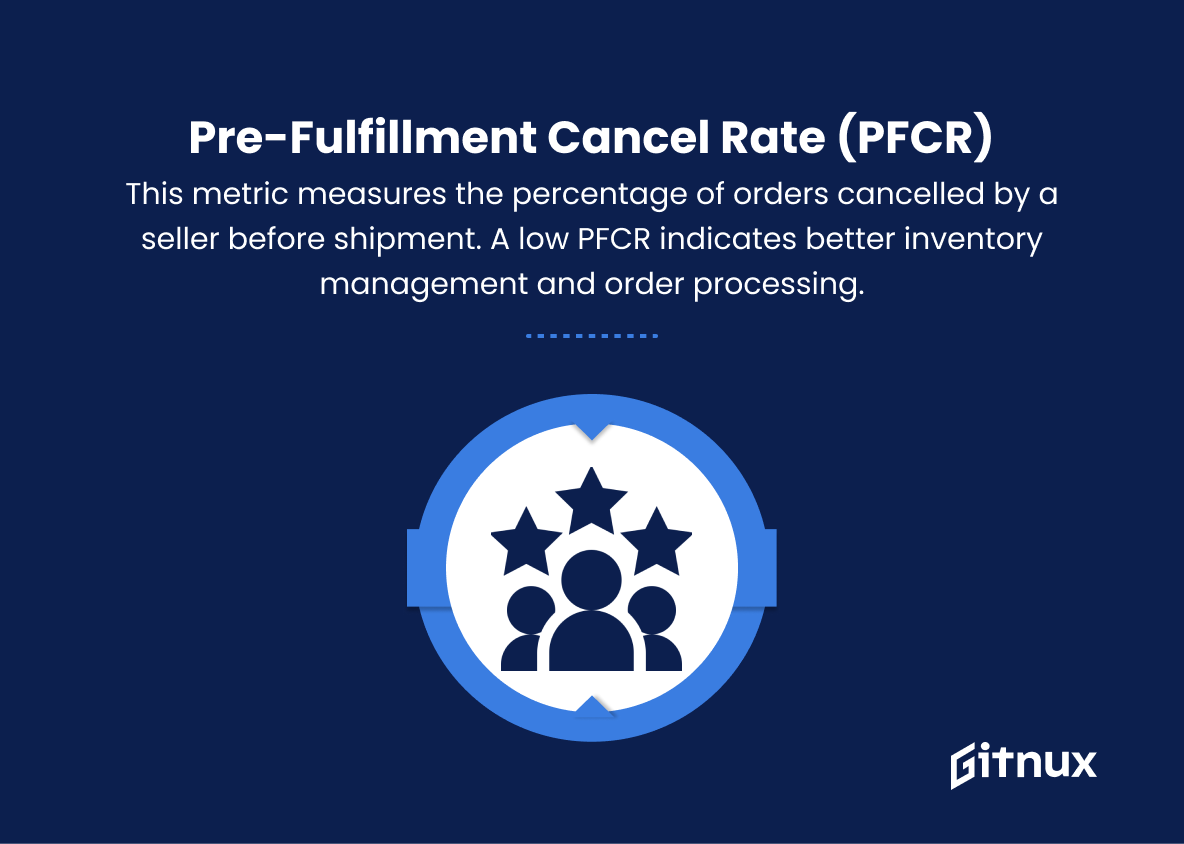In today’s highly competitive e-commerce landscape, managing an Amazon storefront is no small feat. Success on the platform requires diligent analysis, strategic decision-making, and a keen understanding of the metrics influencing your performance. In this comprehensive and insightful blog post, we will unpack the critical Amazon Seller Metrics that every seller should be monitoring to optimize their business operations and achieve sustainable growth. From understanding conversion rates to monitoring customer satisfaction, we will provide a step-by-step guide to equip you with the knowledge necessary to navigate the complexities of Amazon’s world of data and unlock your selling potential. So, buckle up and let’s dive into the numbers that matter most in the world of Amazon selling.
Amazon Seller Metrics You Should Know
1. Order Defect Rate (ODR)
This metric measures the percentage of orders with a defect (negative feedback, A-to-Z claims, or credit card chargebacks). Amazon aims for sellers to have an ODR of 1% or lower.
2. Perfect Order Percentage (POP)
This metric evaluates the percentage of orders completed without any issues (cancellations, delays, returns, or customer complaints). A high POP indicates that a seller is meeting customer expectations consistently.
3. Late Shipment Rate (LSR)
This tracks the percentage of orders shipped later than the expected ship date. A low LSR contributes to a better customer experience.
4. Pre-Fulfillment Cancel Rate (PFCR)
This metric measures the percentage of orders cancelled by a seller before shipment. A low PFCR indicates better inventory management and order processing.
5. Return Dissatisfaction Rate (RDR)
This evaluates the percentage of returned orders that result in a negative customer experience, based on the reason for the return and the seller’s resolution. Lower RDR is desirable.
6. Valid Tracking Rate (VTR)
This calculates the percentage of orders with valid tracking numbers provided by the seller. A high VTR improves buyer confidence and reduces order-related queries.
7. Customer Response Time (CRT)
This metric measures the average time a seller takes to respond to customer inquiries, either via messages or emails. Prompt and effective responses lead to higher customer satisfaction.
8. Feedback Rating
This is the average customer feedback rating (out of 5 stars) received by the seller on their completed orders. A higher rating shows consistent customer satisfaction.
9. Sales Revenue
This is the total amount of money generated through product sales, excluding shipping fees and taxes. Evaluating sales revenue helps sellers understand demand for their products and can be valuable in setting pricing strategies.
10. Conversion Rate
This measures the percentage of site visitors who make a purchase. A higher conversion rate indicates that marketing efforts, product listings, and pricing strategies are effectively engaging customers.
11. Product Listing Impressions
This shows the number of times a seller’s products have been displayed in search results or other browsing methods. The more impressions, the greater the exposure to potential buyers.
12. Page Views
This metric assesses the number of times a seller’s product listings have been viewed by potential customers. This can indicate the effectiveness of product images, titles, and descriptions.
13. Click-Through Rate (CTR)
This calculates the percentage of users who click on a seller’s ads or listings after seeing them in search results. A higher CTR represents more effective marketing or advertising efforts.
14. Advertising Cost of Sale (ACoS)
This metric measures the effectiveness of a seller’s advertising and marketing campaigns by comparing ad spend to the revenue generated from those ads. A lower ACoS means more efficient ad spending.
15. Buy Box Percentage
This measures the proportion of time a seller’s products win the Buy Box (the primary “Add to Cart” button on Amazon). A higher Buy Box percentage increases sales potential.
Amazon Seller Metrics Explained
Amazon Seller Metrics are crucial in assessing the performance of an Amazon seller and their ability to provide a satisfactory customer experience. These metrics encompass a range of factors, such as order defect rate, perfect order percentage, and late shipment rate, which are important in determining the seller’s ability to consistently fulfill customer orders without any significant issues. Additionally, metrics like pre-fulfillment cancel rate, return dissatisfaction rate, valid tracking rate, and customer response time offer insights into a seller’s inventory management, order transparency, and responsiveness in addressing customer concerns.
Feedback rating, sales revenue, and conversion rate help gauge customer satisfaction levels and the effectiveness of a seller’s marketing strategies. Product listing impressions, page views, click-through rate, advertising cost of sale, and buy box percentage also serve as indicators of a seller’s competitiveness on Amazon and the efficiency of their promotional efforts. Overall, these metrics provide a comprehensive understanding of a seller’s performance and their ability to meet or exceed customer expectations, ultimately leading to higher sales, greater profits, and sustained success on the platform.
Conclusion
In conclusion, understanding and optimizing your Amazon seller metrics is vital for continued success in the competitive marketplace. By tracking important metrics like Order Defect Rate, Cancellation Rate, Late Shipment Rate, Perfect Order Percentage, and Buy Box Percentage, you can make informed decisions on how to improve your selling strategies and operations. Staying updated on these metrics not only helps your business thrive, but also ensures your store remains compliant with Amazon’s performance standards, ultimately leading to a rewarding and profitable selling experience. Invest time in regularly monitoring your seller metrics, and watch your Amazon sales soar to new heights. Happy selling.
















